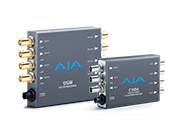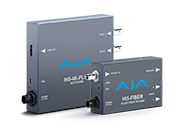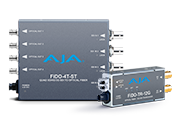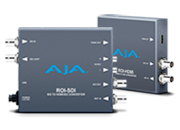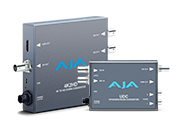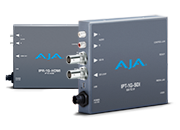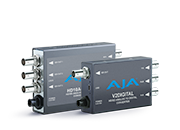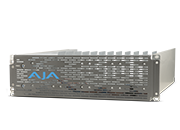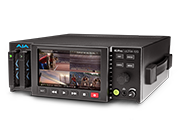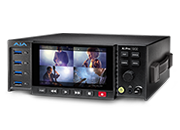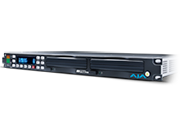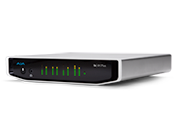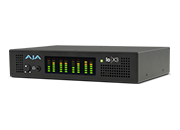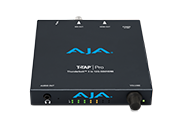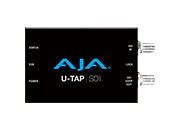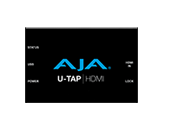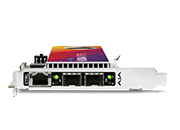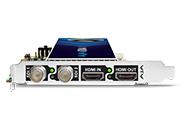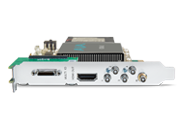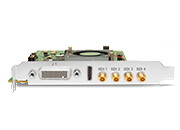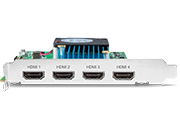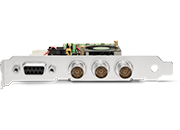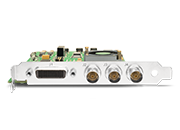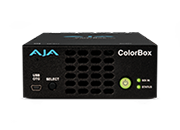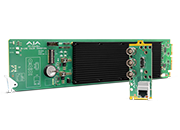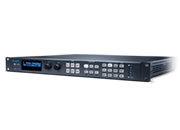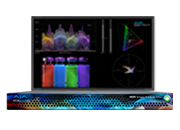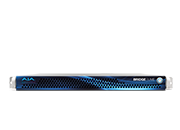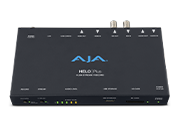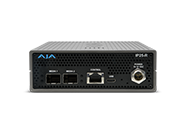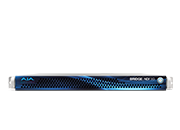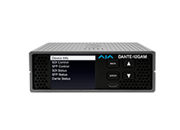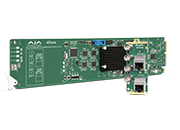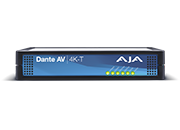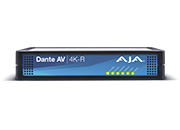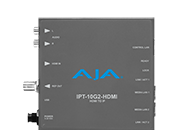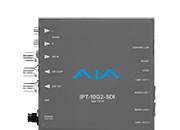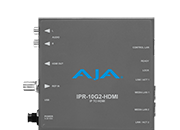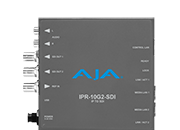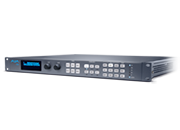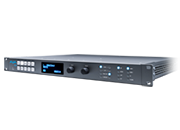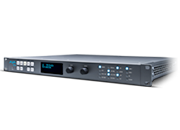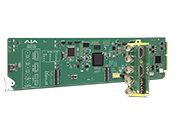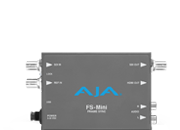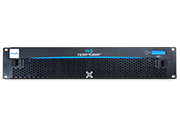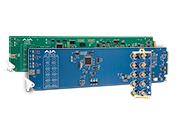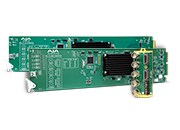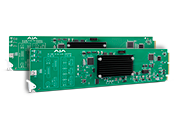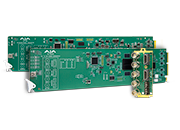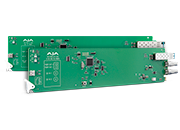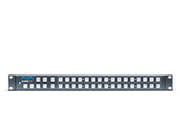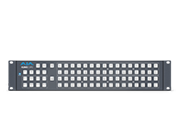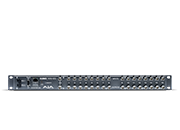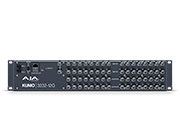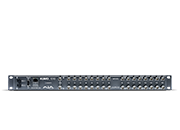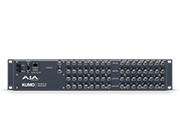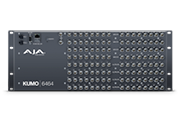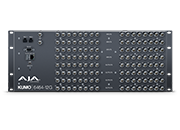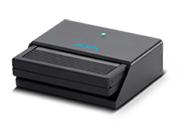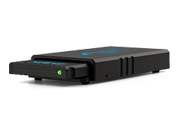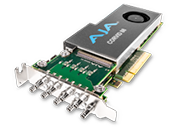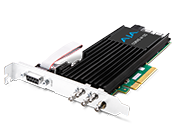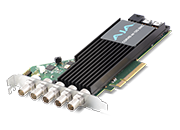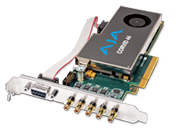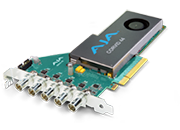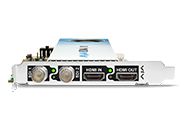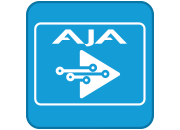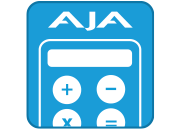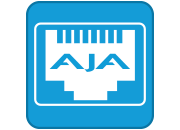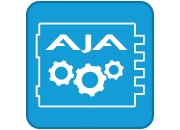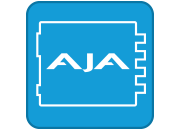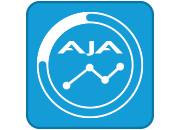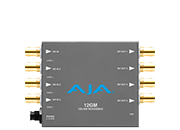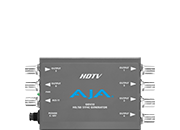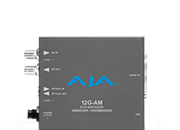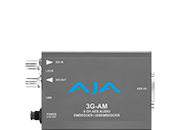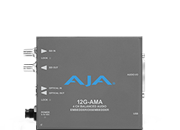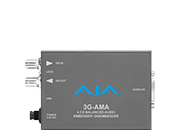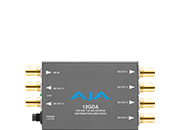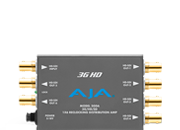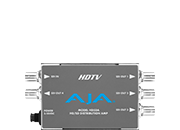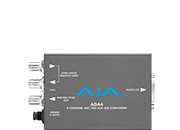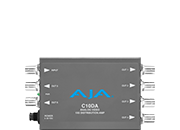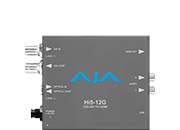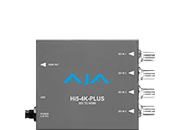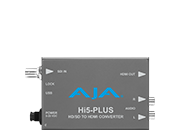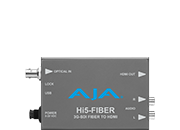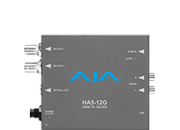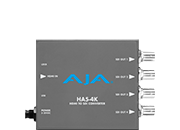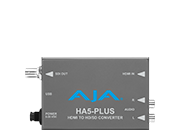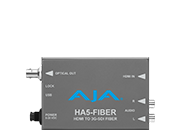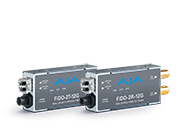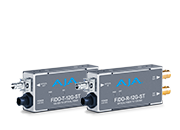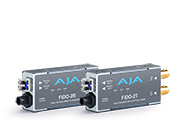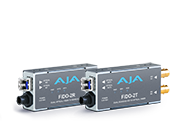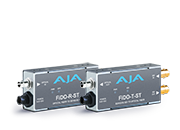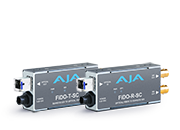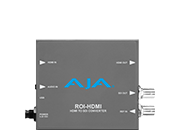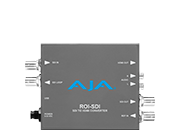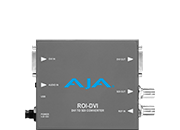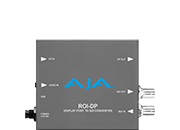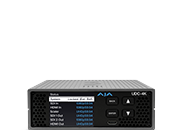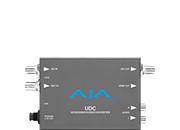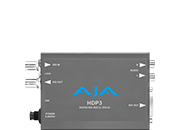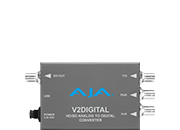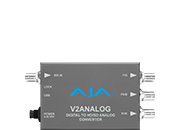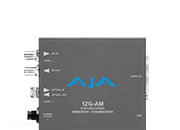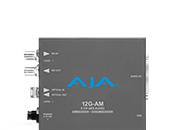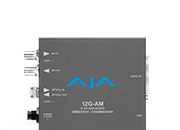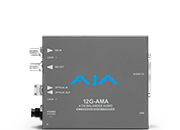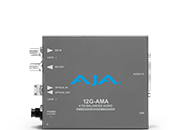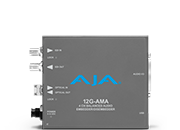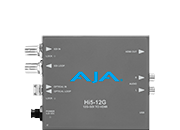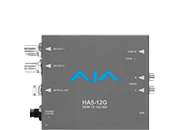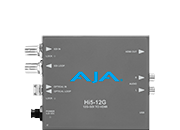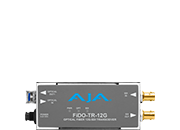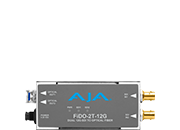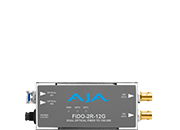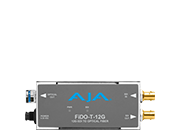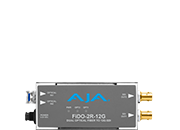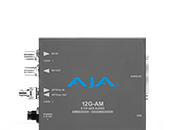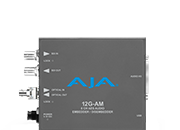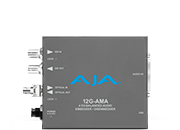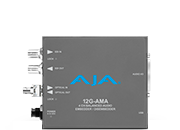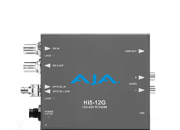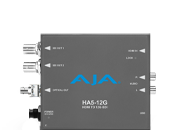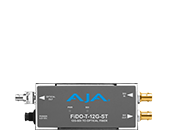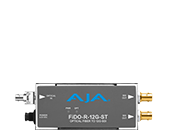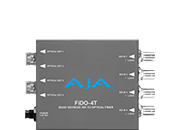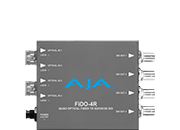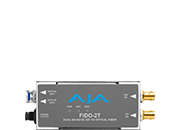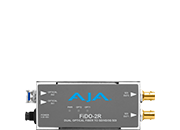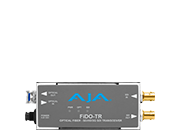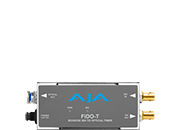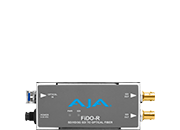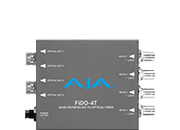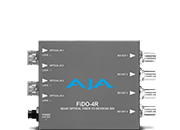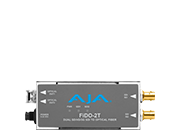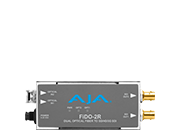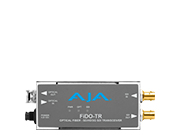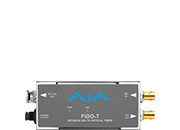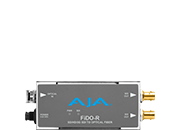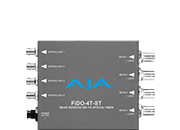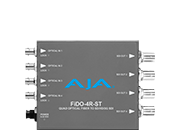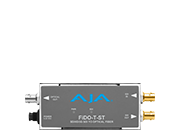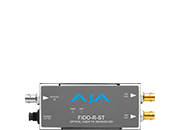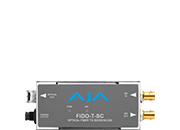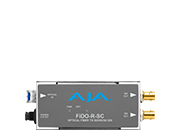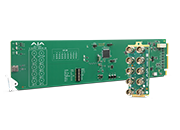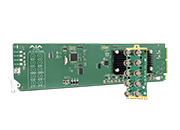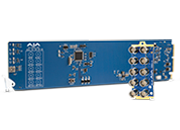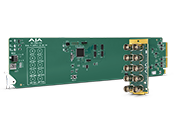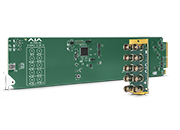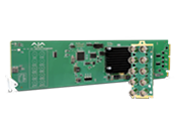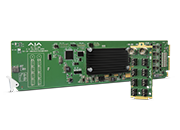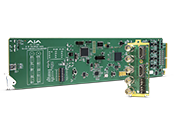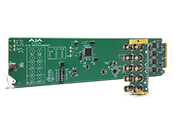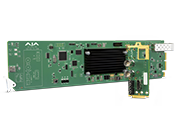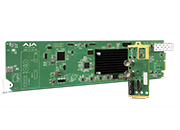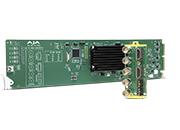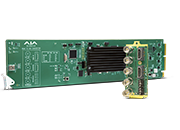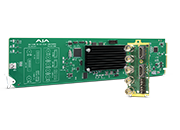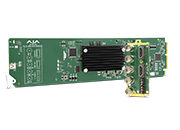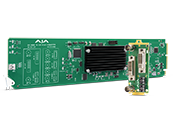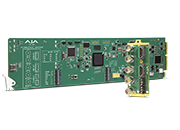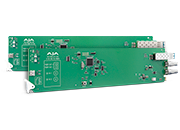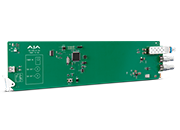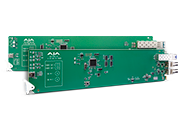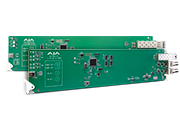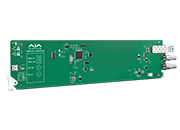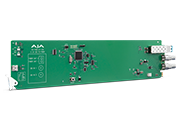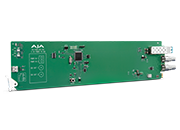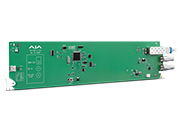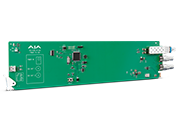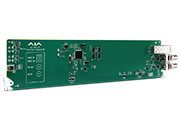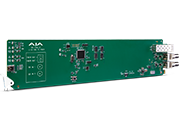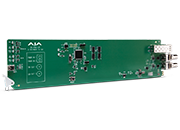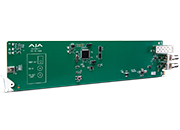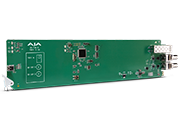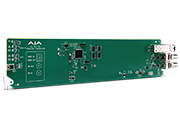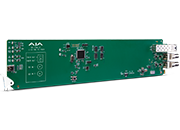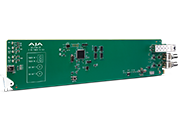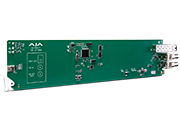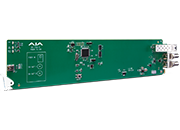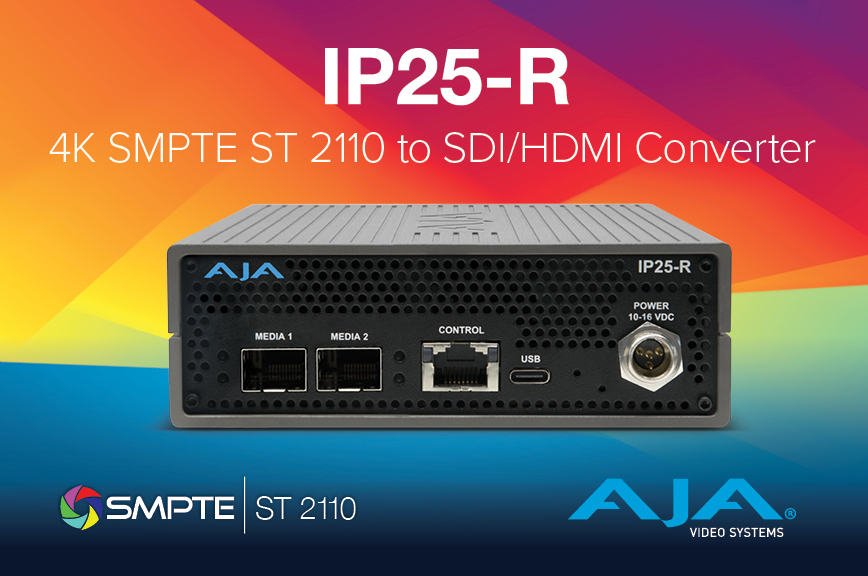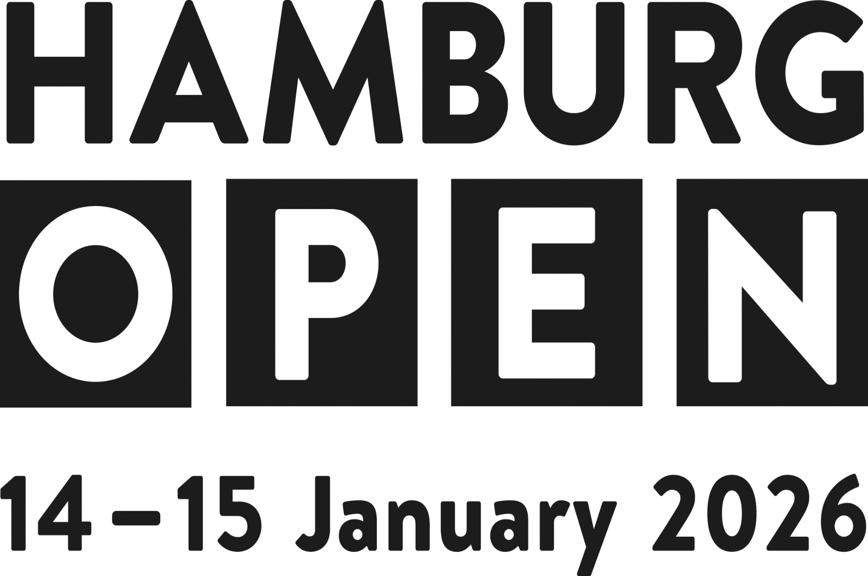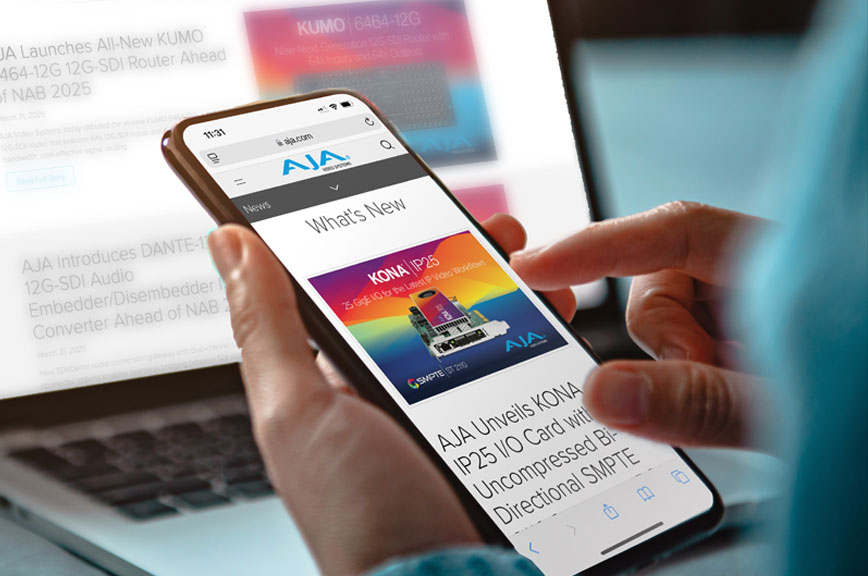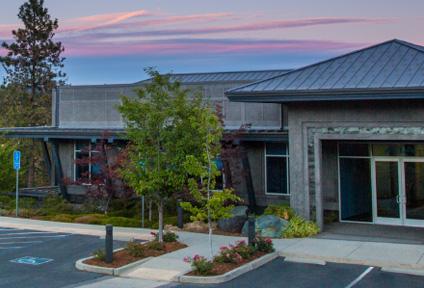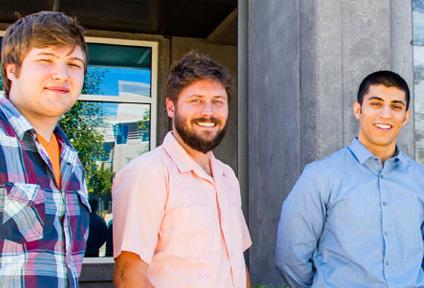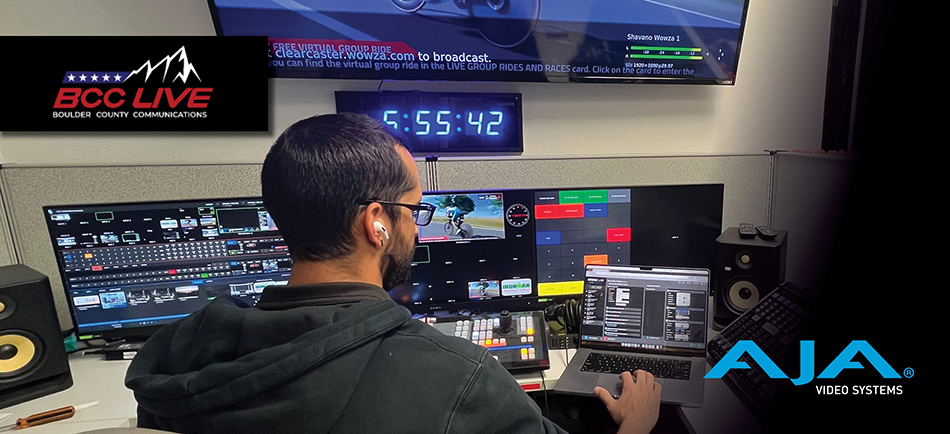BCC Live on Transforming Client Ideas Into Realities
January 22, 2024
Boulder, Colorado-based BCC Live may have gotten its start in information technology (IT) but has quickly evolved into a live production powerhouse. Committed to ensuring customers’ success, the company thrives on solving the most difficult broadcast and live stream challenges for customers across the globe. BCC Live President Dave Downey recently sat down with us to tell us about the difficulties his team faces in the field and how they’re using AJA BRIDGE LIVE to support a broad range of encoding/decoding demands for clients spanning niche sporting events like the IRONMAN Triathlon and Rock n Roll Marathon through to corporate video productions.
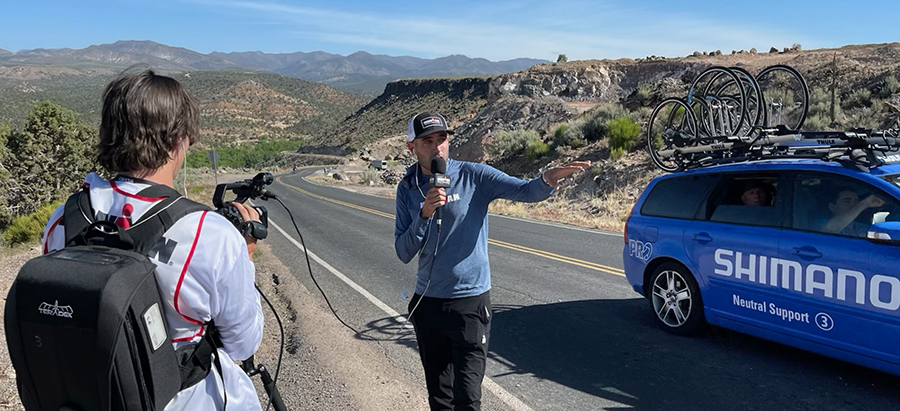
Tell us a little bit about yourself.
I’m President of the company, but I am also an event technician. I initially studied video production in college back in the early 90s, then started up BCC Live. As I learned more about video production and broadcasting, the company thrived, and here we are today.
What’s BCC Live’s backstory?
We started out as an IT company. Then, one day, we got a call from the IRONMAN Triathlon to install their phone system. Once we completed the project, they asked if we could do audio for events. We started tagging along to their triathlons to support audio and eventually picked up video. About eight years ago, they asked us to help with their IRONMAN Frankfurt broadcast. After that, we continued supporting broadcasts for them, and in 2017, we took over all their global broadcasts. Since then, we’ve continued to gain more clients in the space.
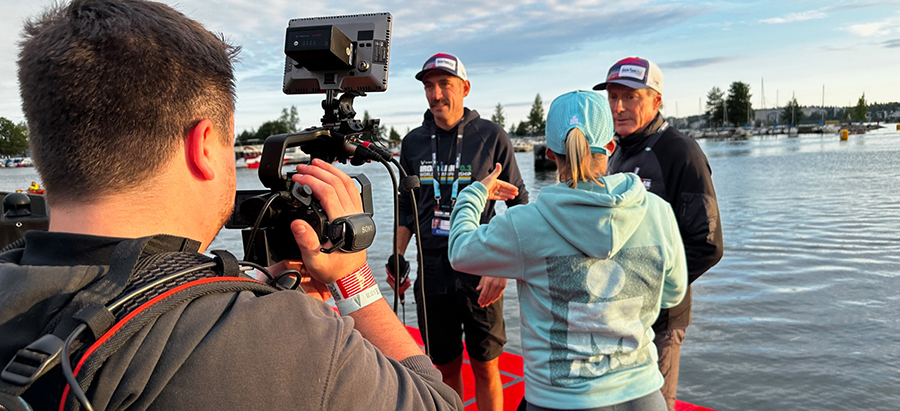
Describe the services you offer.
We provide soup-to-nuts services spanning production through post, including animation and graphics – largely for more niche sporting events but also some corporate clients. Most often, we’re working with production companies who are capturing live event footage on motorcycles. Our team receives the live feeds, then mixes that content, adds graphics, and broadcasts it out to millions of viewers via YouTube, Outside+, or another online video platform. In short, we deliver TV-caliber broadcasts for web consumption.
Outside of IRONMAN, what other clients do you work with?
We also work with the Health Industry Distributors of America. We started collaborating with them during the pandemic and still help them produce conference broadcasts throughout the year. We’ve also done a lot of production work with the Colorado Rapids Youth Soccer program. We record coaching sessions (both in-person and on-site) and post produce them, and then they put them on Vimeo for on-demand viewing.
What does an average project entail for your team?
Every project is so different, but we kick off every project by ensuring all the right people, assets, and equipment are in place for the job. For instance, when we did a production in Finland last year, we had to figure out how to get our equipment through customs and on the ground and enlist the right people locally. We then built out custom graphics to make the event feel special. Once we were ready to execute, we made sure the broadcast workflow and internet setup would hold up. Then, we packaged the content to a more palatable time span, condensing a five-hour broadcast into 45-second highlights for social media platforms like Instagram. Everything we broadcast or produce, regardless of where it takes place in the world, comes into our Boulder studio and is then distributed out to viewing platforms.
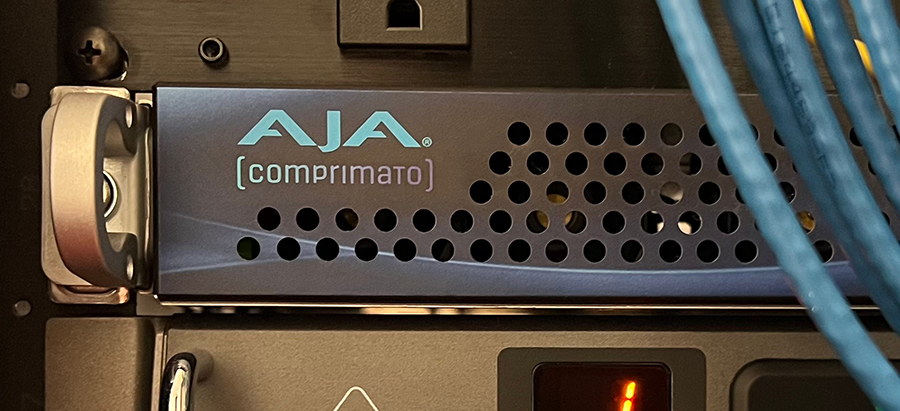
Tell us more about the technologies you’re using across client projects.
We started using AJA BRIDGE LIVE in 2023 to replace an encoding solution that was going to be EOLed (end of life). Our former solution didn't do everything we needed it to, so we used the EOL news as an opportunity to evaluate the latest encoders/decoders. This is how BRIDGE LIVE came across our radar. After learning about it, we did a demo, and in 15 minutes, we were sold. We knew it could solve a lot of problems for us and would do nearly everything we’d need. And when we got the device, we quickly realized its full value.
We use BRIDGE LIVE almost every weekend, whether for testing or broadcasting. All our clients work in different locations, each with different broadcast environments and deliverable requirements – be it 1080i or 1080p, 50 or 60 frames, SRT (Secure Reliable Transport), etc. – and BRIDGE LIVE allows us to take in nearly any type of feed and send out whatever end format is needed. With it, we can also send SCTE markers to customers more intuitively so we can trigger ads on their end. BRIDGE LIVE has significantly reduced the volume of equipment we use every day. It allows us to go in and build a new profile for any project, and we’re then set for the broadcast without a lot of stress and trouble.
You mentioned SRT. How much demand are you seeing for it?
We see a lot more requests for SRT now. In fact, last year, it was probably the most popular request, but we still see a lot of interest in RTMP. Of course, we also use SDI and NDI a lot. BRIDGE LIVE supports them all. One of the reasons we love using NDI with BRIDGE LIVE is that we don't have to get up from our seats to send the signal in the studio; on my laptop, I can easily pop it open in NDI, see it, do a quality check, and then go into the studio and pull it into the TriCaster and make sure everything is the way I want. Then, I can patch it and set it up as SDI, so whenever we need it in multiple places, rather than routing the SDI through, we can use a matrix splitter so multiple studios can grab it off NDI. It’s a really simple way to split off a world feed right as we get it. We can put it on our network with NDI and then have each studio grab what they need from it.
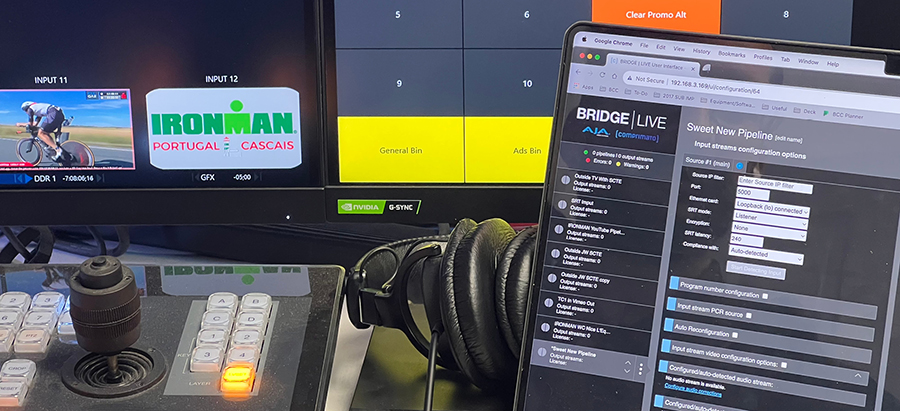
How are you using SCTE ad insertion markers with BRIDGE LIVE?
For 70.3 IRONMAN competition broadcasts, Outside TV often runs the ad breaks. To make the process seamless, we send them SCTE ad insertion markers – leaning heavily on BRIDGE LIVE’s ability to send that SCTE metadata down to the broadcast channels – which they use to trigger ad breaks on their end.
Can you walk us through a project workflow?
For a lot of the IRONMAN events in Europe, we work with a production company that gives us a live premix feed with natural sound that doesn’t include graphics. Our Boulder studio receives that feed via BRIDGE LIVE, and it’s pulled into our video mixer via SDI and sent to a few different destinations in our studio. We first send it to our replay machine, grab the feed that the BRIDGE LIVE is spitting out, and then send it into our TriCaster via SDI, which is where we add in HTML5 graphics. We use a green screen background and then put video behind the hosts so it looks like they are in the location of the event. Our team sends that out via BRIDGE LIVE to YouTube, Facebook, and Outside for the viewers to see, as well as to Grabyo, where our client can pull content for social needs.
Next, we spin off a world feed that we send to LiveU Studio and also transmit a mixed feed to LiveU Studio from the BRIDGE LIVE. In LiveU Studio, we might bring in remote French hosts, mix in localized content, and send that off to L'Équipe. We’ve also done the same scenario but sent the feed to other destinations like Portuguese TV. Every weekend, we’re typically using BRIDGE LIVE to support three or four broadcasts coming out of One World Feed originating from Europe that travels through to our Boulder studio, where we do our magic. Then, we send it out to the respective endpoints in different languages.
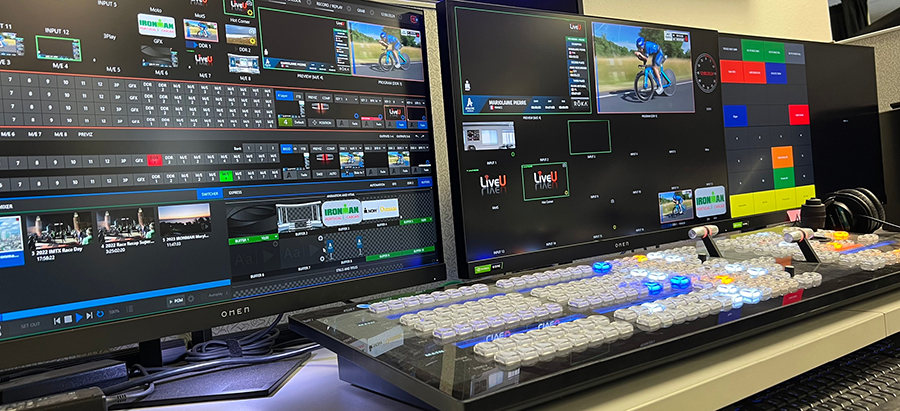
How has BRIDGE LIVE changed the way your team works?
BRIDGE LIVE is so quick to live; it reduces the need for about half our encoding/decoding technology. With it, I can easily grab NDI off the network regardless of the source. We have it patched out in our patch panel in our server closet, and it just has a mirror of what the ports are on the back, so it's right there in front of us, and we can just plug nearly any device into it.
One of the biggest benefits of BRIDGE LIVE is that we can specify every piece of the configuration, like the frame size, and we’re never stuck with just two choices. With some encoders, you’re stuck with the presets, so if a client asks for 1920x1088, it’s a tall order. With BRIDGE LIVE, I can specify almost any configuration option on the input and output. As we’ve been working with higher-end broadcasting platforms, they also expect us to be able to tell them the video PID, Audio PID, etc., and with BRIDGE LIVE, we can easily provide that. And we can set the audio to nearly anything we want, which is awesome, especially because we get so many unique audio requests from our European clients. Just having all those configuration options has been huge for us, and to be able to add metadata to the stream and add SCTE markers to the stream is instrumental. Eventually, as we’re asked to add closed captions in the upstream, BRIDGE LIVE will also make that easier.
The updates AJA continues to add to the device are also hugely helpful. When we bought BRIDGE LIVE, AJA told us they were planning updates. Unlike literally every company that says that, and then never delivers, AJA regularly pushes out meaningful updates. The addition of formats in the input and output stream is just one of many great feature additions since we invested in the unit. We also love how updates have allowed us to take progressive and send it back out interlaced and vice versa; doing so used to require a huge, expensive rack, but with BRIDGE LIVE, we can do it with just one unit.
Tell us more about the challenges you face across broadcasts and how you overcome them.
Issues are bound to arise in any production, and it’s often a matter of narrowing down the problem in the chain and troubleshooting. It could be as small of an issue as a codec, frequency, or frame rate that throws something off, and we have to sort out a setting. We love it when clients bring us a problem because we work with really smart, passionate people who enjoy the challenge and love celebrating with clients when we find ways to solve those challenges. Our team is also very close. We love the outdoors, and a lot of us ski and bike together. Our culture and the way we work together helps us navigate any challenge that comes our way. We have fun before we have to work, and our customers get that. They know we’ll give it a hundred percent.
Which technology trends are you following?
We always have our eye on cutting-edge technology and are constantly evaluating how we can integrate it into our workflows or produce a variation of the technology to transform our clients’ grand ideas into realities. HTML5, which we’ve already used for five years for graphics, remains a technology we’re watching. People thought we were crazy back then for experimenting with it, but now the technology is mainstream, and I see it going further in 2024. We also follow new iPhone and GoPro releases, but there’s only so much you can do with them, which is why we have LiveU backpacks. Everyone wants to be live all the time. We see consumers push out crazy good broadcasts using GoPros and iPhones, but the production world still has a long way to go in terms of lowering the cost of mobile production. In the future, I see broadcasting becoming even more accessible.
What’s next for BCC Live?
Growth, and more specifically, we’re angling to work on the big games when they come to Los Angeles in four years. Our team broadcasts incredible sporting events like the IRONMAN World Championship to millions of people, and we use the best technology to do it, from our cameras to the mobile production backpacks and our studio. We're ready for a challenge like that.
About BRIDGE LIVE
Developed in cooperation with streaming software experts Comprimato, BRIDGE LIVE is a turnkey solution built for critical streaming and contribution applications with high performance 12G-SDI video encoding/decoding, stream-based transcoding, with flexible 12G-SDI I/O, comprehensive metadata and closed caption support, all within a compact 1RU form factor with redundant power supplies. www.aja.com/bridge-live.
About AJA Video Systems
Since 1993, AJA Video Systems has been a leading manufacturer of video interface technologies, converters, digital video recording solutions and professional cameras, bringing high quality, cost effective products to the professional broadcast, video and post production markets. AJA products are designed and manufactured at our facilities in Grass Valley, California, and sold through an extensive sales channel of resellers and systems integrators around the world. For further information, please see our website at www.aja.com.
All trademarks and copyrights are property of their respective owners.
Media Contact:
Katie Weinberg
Raz Public Relations, LLC
310-450-1482, aja@razpr.com
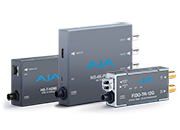 Mini-Converters
Mini-Converters
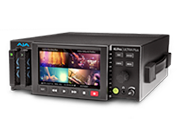 Digital Recorders
Digital Recorders
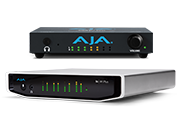 Mobile I/O
Mobile I/O
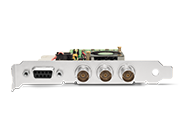 Desktop I/O
Desktop I/O
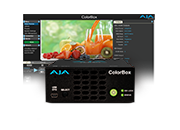 Color
Color
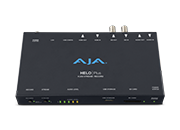 Streaming
Streaming
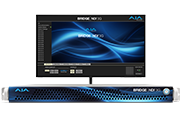 IP Video/Audio
IP Video/Audio
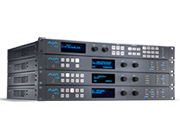 Frame Sync
Frame Sync
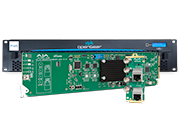 openGear
openGear
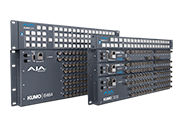 Routers
Routers
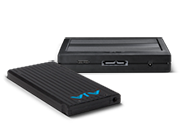 Recording Media
Recording Media
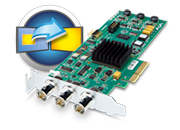 Developer
Developer
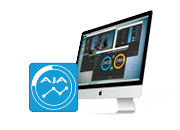 Software
Software
